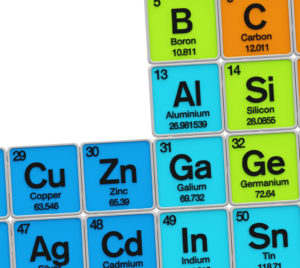
Aluminum Association: Different alloy makeup, quality work might curtail corrosion
By onAssociations | Market Trends | Repair Operations | Technology
From time to time, you might hear a insurer or body technician argue, “There’s been aluminum on cars for years and we’ve never had a problem with corrosion. We don’t need to use separate tools or do all of those extra preparation steps.”
But there’s a couple of logical explanations for this absence of comebacks.
In one scenario, the aluminum corroded but the customer didn’t bring the car back, whether out of laziness or a misconception that the corrosion stemmed from bad luck and environmental conditions. In another, the customer sold the car to someone else or for scrap before the corrosion kicked in.
“This filiform corrosion takes 3-4 years of service in a conducive environment for the filiform corrosion to grow to a size that it is visible,” the Aluminum Association wrote in an October 2017 study of filiform corrosion, one of the types of corrosion which can occur on automotive aluminum. It’s a different form of corrosion than the galvanic corrosion separate steel and aluminum tools are meant to address, but it’s still something a shop needs to mitigate.
In a third explanation, the shop or OEM just lucked out and avoided filiform corrosion with a variety of vehicle and environmental conditions.
“While many paint defects are typically present to serve as potential nucleation sites, many remain as very small pits or grow so slowly they are of no practical concern,” the association wrote. “However, if the environment is conducive, and the pretreatment, adhesive or sealer interface is poor, filiform corrosion can progress surprisingly rapidly.”
But the paper also suggests another interesting reason why corrosion might not have appeared as frequently on some aluminum vehicles. According to the Aluminum Association, the chemical composition of the particular aluminum alloy might affect the risk of aluminum corrosion:
Certain alloys, particularly those that contain Cu (copper), are more prone to filiform corrosion since the Cu can be leached or corroded out of the aluminum alloy and exists as a Cu ion in the electrolyte solution, which increases the potential difference between the head and tail. This has been observed in aggressive laboratory-accelerated corrosion tests, but may or may not be present in field surface depending on the quality of the paint system.
Fortunately, as the paragraph continues, if you prepare and paint the car correctly, the copper and other filiform corrosion-prone elements will treat you and your customer right:
With a quality paint system, virtually all alloys used for automotive applications don’t exhibit filiform corrosion. … For example, in the early 1980’s the original aluminum Ford Town Car hood was made from a Cu rich aluminum alloy, following the concept of aircraft sheet alloys, and even after 20+ years of service, almost no examples of field filiform corrosion were found on still drivable or parted out vehicles in scrap or parts yards.
Repairers and OEMs’ bets might be further hedged against corrosion from what the Aluminum Association reports has been a decrease in closure aluminum’s copper content.
“Over the last 5 years or so, the aluminum alloys used to make closure panels have had minimal amounts of Cu, levels so low that even using accelerated laboratory testing, the Cu is not a contributing factor,” the association wrote.
But you still have to do your job: “With poor paint preparation, virtually all alloys, including pure aluminum can exhibit filiform corrosion,” the association wrote.
More information:
“Analysis of Painted Aluminum Hood and Associated Corrosion at Hem”
Aluminum Association, October 2017
“Corrosion Types for Aluminum Parts Used in Vehicular Applications”
Aluminum Association, Feb. 22, 2017
“ALUMINUM REPAIR IN THE AUTOMOTIVE COLLISION REPAIR INDUSTRY”
P&L Consultants for Aluminum Association, June 23, 2017
Featured image: According to the Aluminum Association, the chemical composition of the particular aluminum alloy might affect the risk of aluminum corrosion. (Nerthuz/iStock)
